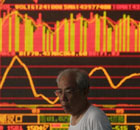Editor Choice
Tapping into men's growing interest in fashion
By Wang Xiaotian and Ding Qingfen (China Daily)
Updated: 2010-02-22 10:28
 |
Large Medium Small |
Chinese readers' taste
"The Chinese readers are very interested in practical things, very concrete usable ideas which apply to their lives," said Jonathan Newhouse, chairman of Conde Nast International Ltd, which owns GQ. "Probably they are more interested in this aspect than in the lives of people in other cultures or countries. We try to meet the requirements of readers in this country and at the same time to maintain high standards. That is the magic and art of editing and publishing a magazine.
"That's where we have to apply our experience and talent. I can't say in one sentence how to do it but that's really what we are trying to do all the time."
"The very first issue of GQ sold even more than For Him Magazine.
"That's a very strong performance," said Zou Wu, senior research manager of Opening Strategy Consultation. More up-to-date circulation figures were not available.
Zou estimated that the near-monopoly position of Trends Group in men's fashion magazines could be broken by powerful challengers such as Conde Nast, Hachette Filipacchi and even Rayli in the next two or three years.
"Definitely the competition will become fiercer. In October, the suspension of publication of the former popular Prestige demonstrates what a tough business this is."
He added that despite the arrival of other big players in the market, it was still far from saturated and there was enough room for small- and medium-sized magazines to survive if they focused on specific niche areas.
Wu Xiao, advertisement manager of Trends Esquire, said the Chinese market men's magazines was still full of opportunities.
"Although at the beginning of last year the advertising budget of first tier brands all shrank, by the end of the year it went up a lot. The budget for some luxury brands even increased by 100 percent," he said.
But Zhou Zhou, director of the editorial department at Trends Esquire, said the market for men's magazines had become overheated, given the limited number of readers and insufficient development of the fashion industry.
"We are eating into future profits in this highly competitive game," he said.
Newhouse said in emerging markets such as China and Russia, the magazine business and its development continue to be very strong, unlike in America, where it has been difficult for all publishers and some magazines have closed.
"The success of Vogue (launched in China in 2005) and Self (launched 2007) has had a significant impact on the group," he said.
"China now ranks among the top five markets outside the US. When I say in the top five, I must point out that Conde Nast has been in Britain since 1916, France since 1920, and in China only the last five to six years."
In April this year, the group shut down the US business magazine Portfolio. On Oct 5, the group closed four of its other US magazines: Gourmet, Cookie, Elegant Bride and Modern Bride.
"Most global luxury brands need China to make up for the huge loss from the economic crisis, so the advertisement outlay in the Chinese market has actually been growing, which accelerates the growth of fashion magazines in China and attracts more global players here where the money is," said Tian Xun from Trends Esquire.
In 2009, China overtook the US as the second largest market for luxury consumer goods behind Japan.
A report from Ernst & Young predicted the market would continue to grow at a speed of 10 percent a year from 2009 to 2015. Access to the latest fashion news for young men shows no signs of abating.














